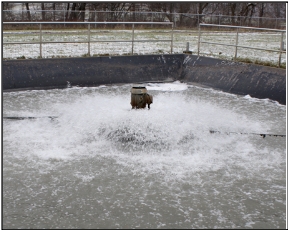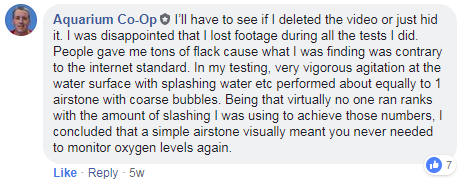Ah, source material. Thanks. Same source as the first chart? Or the source of the second chart?
Actually, the ocean article addresses the subject experimentally and computationally, describes the process and laser instruments used to take measurements, and the process of oxygen dissolution as it was observed in experimental tanks.
As I said, perhaps not clearly enough worded, I'm not saying no gas exchange takes place underwater at the surface interface of a bubble, my own link shows that it does. But the process, as described in my source, is still influenced by and made more efficient by turbulence, including the turbulence, vortices, and current created in a tank by a bubble stream.
What I'm disagreeing with is the claim of the video the original poster linked-- "It's the bubbles NOT the surface agitation." The guy in the video doesn't understand the process. His "little bit of surface agitation from that little bit of bubbles" statement eminently demonstrates this.
Actually, the ocean article addresses the subject experimentally and computationally, describes the process and laser instruments used to take measurements, and the process of oxygen dissolution as it was observed in experimental tanks.
As I said, perhaps not clearly enough worded, I'm not saying no gas exchange takes place underwater at the surface interface of a bubble, my own link shows that it does. But the process, as described in my source, is still influenced by and made more efficient by turbulence, including the turbulence, vortices, and current created in a tank by a bubble stream.
What I'm disagreeing with is the claim of the video the original poster linked-- "It's the bubbles NOT the surface agitation." The guy in the video doesn't understand the process. His "little bit of surface agitation from that little bit of bubbles" statement eminently demonstrates this.




